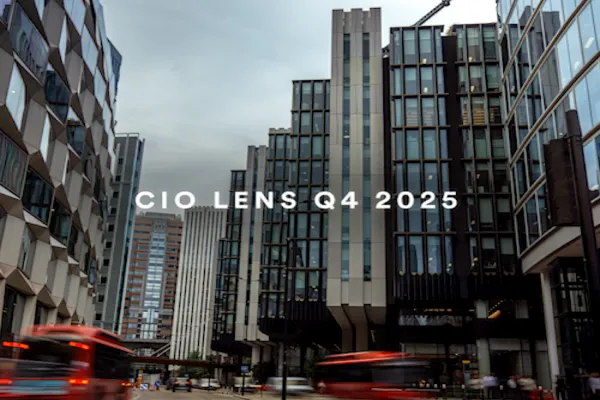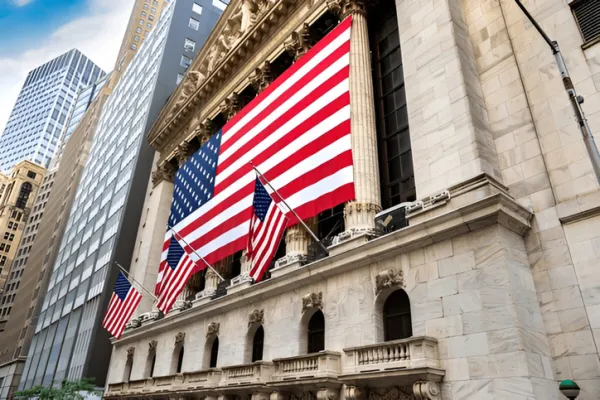All eyes are on the East. With most of the world mired in recession, many investors are looking longingly toward Asia, the only region that the International Monetary Fund says will continue to grow economically in 2009, "led by China and India."
China will likely see real GDP growth of 6.5 percent, and India’s economy will expand by 4.5 percent, the IMF predicts. Although those figures are down sharply in comparison with the countries’ recent booms — China enjoyed real GDP growth in excess of 10 percent per year from 2004 through 2007 before slowing to 9.1 percent last year, while growth in India topped 8 percent in 2006 and 2007 before slipping to 7.3 percent in 2008 — they stand in stark contrast to the 1.3 percent worldwide contraction the IMF expects this year.
"Looking at the world as a whole, growth is quite a scarce commodity," observes Sunil Garg, Hong Kong–based director of Asian ex-Japan equities research for J.P. Morgan Securities. "Where there is growth, investors love to return to equities — and Asia is very well stocked with opportunities."
Investors that have seen their portfolios ravaged by losses in stock markets around the world are understandably skittish about risking more money at such a volatile time, even though recent sell-offs have left equities more attractively priced than they have been in years. Investors need on-the-ground, in-the-trenches analysts to help them traverse the tumultuous economic landscape, and when it comes to coverage of Asian equities, no firm does a better job than Citi, which leads the 2009 All-Asia Research Team, Institutional Investor ’s 16th annual ranking of the region’s best equity analysts.
[Click on the following title to view the complete rankings of the 2009 All-Asia Research Team ]
Citi, which last year tied for first place with J.P. Morgan Securities, has the winner’s circle all to itself this year. The firm captures 28 total positions, two more than in 2008, including 11 teams ranked No. 1 in their respective sectors, up from eight last year. UBS rises one rung to second place; the giant Swiss bank claims 24 positions, the same number as last year, and is home to five top-ranked teams, one more than 2008. J.P. Morgan slips to third place, losing three positions overall and six of its seven No. 1 teams. Rounding out the top five are Credit Suisse, which repeats in fourth place and wins 21 positions, two more than last year, and Banc of America Securities–Merrill Lynch, which jumps from No. 7 and takes 20 team positions. Results are based on responses from more than 1,900 investment officers and portfolio managers at 700 firms managing an estimated $1.6 trillion in non-Japanese Asian equities.
Economic growth in Asia in general, and China and India in particular, will be aided by two factors: historically insular financial systems and large domestic markets with strong growth potential. "Compared to their Western peers, Asian governments and consumers have saved more and financial institutions have lost less," explains Julian Pickstone, director of Asian equities research at UBS in Hong Kong. "This should help the recovery."
J.P. Morgan’s Garg concurs. "China, India, Korea and Taiwan are the nations at the forefront" of the global recovery, he says. "We’re more positive on financials overall in the region. We’re even a little positive on technology."
Garg says that for the past 18 months, volatility has been exceptionally high in Asia — "we swung from bullishness to bearishness to confusion" — but that things look a bit better now. "In China corporate earnings are up a bit," he explains. "In India we are seeing some good company results. With governments easing monetary and fiscal policies, there is a very, very strong tailwind in the markets."
Duncan Wooldridge, who has led the UBS team for the past two of its four consecutive first-place finishes in Economics, also believes the worst may be over. "The world at large is not out of the recession yet, but things are getting better, compared with the horrific state six months ago," the Hong Kong–based economist says. Wooldridge’s six-member squad predicts that China will see real GDP growth of 7.0 percent this year, thanks in part to the Chinese government’s 4 trillion yuan ($584 billion) stimulus package. "Most indications are for a recovery on the Mainland," he adds.
The recovery is already under way, insists Frank Gong, who captains J.P. Morgan’s 25-member China team to the top spot for a fourth straight year. He is even more optimistic than Wooldridge or the IMF about the economic prospects for China, predicting it will see real GDP growth of 7.2 percent in 2009.
"We have been holding the view that China would be the first to emerge from the global recession and lead the global recovery," the Hong Kong–based Gong says, noting that recent economic data validates his team’s belief, held since November, that the Chinese economy bottomed out in the fourth quarter. "Fundamentals continue to move in the right direction, and we are encouraged by continued strength in domestic demand, especially the sustained recovery in property transaction volume and auto sales."
Investors seem to agree. China’s benchmark Shanghai composite index surged 30.3 percent in the first quarter, besting every other stock market in the world. The Standard & Poor’s 500 index, by comparison, fell 11.7 percent in the same period.
Consumer spending "is key to driving China’s recovery," Gong adds. In addition to urging clients to reduce their exposure to defensive stocks and overweight property and consumer-discretionary companies, he is telling investors that moneymaking opportunities abound with oil refiners and independent power producers. "We expect the government will increase residential electricity prices to fend off the risk of deflation expectations," he explains.
Among the companies Gong’s team is currently recommending are China Petroleum and Chemical Corp. (known as Sinopec), the country’s largest producer of ethylene, and China Shenhua Energy Co., one of the world’s biggest coal producers. Sinopec saw a 50 percent increase in net profit year-over-year in the first quarter, and Shenhua’s first-quarter sales exceeded company expectations, although officials at the state-owned outfit declined to release specific figures. The stocks gained 26.8 and 18.0 percent, respectively, the first three months of this year.
China, unlike many other countries, "has only a cyclical problem, not a balance-sheet problem," Gong explains. "The country’s balance sheet is actually very strong. The government stimulus and money being printed in China can go into the economy directly and promptly, while in many other economies and countries, stimulus money has to fill a big black hole in the balance sheet first — the rest of the real economy has not felt much new money coming in from the stimulus."
Across Victoria Harbour, the outlook is not so sanguine. "Our economics team is seeing a 2.2 percent contraction in Hong Kong this year," says Anil Daswani, who leads Citi’s top-ranked teams in Hong Kong and Industrials and No. 3–ranked teams in Conglomerates, Gaming & Lodging and Transportation & Infrastructure.
Hong Kong experienced a "lost decade," Daswani explains, after the collapse of the Thai baht in 1997 sparked a currency crisis that sent shock waves across the region and constrained investment for many years. "Everything started turning positive in 2006," he adds. "The financial services sector was the key, because of all the hedge funds coming in. When the credit crisis hit, it hit Hong Kong hard."
Unemployment is at 5.3 percent and rising, he says: "We haven’t yet seen the peak."
Daswani expects Hong Kong’s economy to rebound next year. In the meantime, he is directing clients’ attention to companies likely to benefit from China’s economic revival, particularly conglomerates. Current favorites include New World Development Co., which manages commercial properties in China, including hotels, restaurants and shopping centers, and is attractively valued, Daswani says, after a massive sell-off amid general market turbulence last fall. The stock slipped 1.7 percent in the first quarter, from 7.86 yuan to 7.73 yuan, but still outpaced the 5.6 percent drop of Hong Kong’s benchmark Hang Seng index over the same period.
The analyst notes that he is "bearish overall" on the property sector, but he believes that New World and other conglomerates stand to gain from consumer spending in China and because of their operation of various infrastructure entities, including toll roads and cargo terminals, on the Mainland. The Chinese government’s economic stimulus package allocates $200 billion a year over ten years for infrastructure spending, nearly half of which is earmarked for the transportation sector. Key projects include $24 billion to build a high-speed passenger rail line from Beijing to Guangzhou, $22 billion for freight rail lines in Shanxi province and $17.6 billion for a passenger rail line across northwest China.
Adrian Faure, Citi’s Hong Kong–based director of Asia-Pacific equity research, noted late last month that investor interest, although still "muted," is picking up. "In the past few weeks, some $2.5 billion has flowed into Asian mutual funds from retail investors in the West, and altogether, $5 billion has come into emerging markets," he says. "This is the first indication of a reversal of the outflows" that saw foreign investors fleeing Asian equities last year.
Foreign investors, although welcome, are not essential to India’s recovery. N. Krishnan, who leads the 18-member India team at CLSA Asia-Pacific Markets from runner-up to first place, says the country is poised for organic growth, thanks to its relatively low reliance on exports — less than 20 percent of GDP — and government stimulus plans that have made more money available to consumers, rather than being used to shore up ailing financial institutions.
"This is a consequence, in part, of a legacy of restrictive, inward-looking regulation," the Mumbai-based analyst explains. "The Indian banking system has had little exposure to dubious overseas assets and, being 70 percent state-owned, remains fairly eager to lend to consumers and corporate borrowers of reasonable quality."
Another reason for India’s resilience is the low market-penetration levels for many basic goods and services. There’s plenty of room for strong intrinsic growth, Krishnan says: "This is best manifested in the continued buoyancy in new subscriber additions as telecommunications companies roll out services in rural India and the early revival in demand for housing and small cars, in response to recent price cuts by developers and manufacturers."
One of Krishnan’s top stock picks at the moment is ITC, formerly known as Imperial Tobacco Co. of India. He likes its strong pricing power and growth in cigarette sales despite adverse regulatory actions, including laws limiting the sale of tobacco products. ITC’s share price rose 7.7 percent in the first quarter, far ahead of the 0.6 percent gain by India’s benchmark Bombay Stock Exchange sensitive index.
Finally, the Indian government’s economic stimulus measures — which at 200 billion rupees ($4.12 billion) are much smaller than those of many nations — have largely targeted the country’s rural multitudes, which make up 70 percent of its 1.1 billion population.
"While it is true that India, with a fiscal deficit in excess of 10 percent [of GDP], is constrained in providing an aggressive fiscal stimulus at this point, it should be recognized that a good part of the fiscal deterioration has arisen from the loose fiscal policy of the past 18 to 24 months, which is undoubtedly having a positive impact on consumer spending," Krishnan observes. He cites such government initiatives as increased farm subsidies, pressure on banks to ease borrowing restrictions for farmers and debt waivers for small farmers.
"Rural folk are actually in good shape and spending," he adds.
That’s great news for investors, but the rekindling of interest in Asia comes at a time when many of the big global banks, reeling from massive credit-related losses, have laid off analysts and scaled back coverage as part of companywide cost-cutting efforts.
"We have made a concerted attempt to drop coverage of ‘unprofitable’ stocks where trading volumes do not justify full coverage and institutional client interest is minimal," says Citi’s Faure. His firm now has 74 analysts covering the region, down from 75 one year ago, and they follow 650 Asia ex-Japan stocks, down from 725. "As markets recover, we will gradually increase coverage again to a level of around 700," Faure says.
UBS has 77 analysts covering 716 regional stocks, according to research director Pickstone, down from 84 analysts covering 774 stocks one year ago. To offset the cutbacks, the Swiss bank has established relationships with other research providers. In November UBS acquired a minority stake in GovernanceMetrics International, which allows the bank’s institutional investors to use the New York–based corporate governance rating agency’s research, and last month it entered into a strategic alliance with U.K. investment bank Noble, which in September acquired Mumbai-based equity research firm Clear Capital. The agreement gives UBS clients access to Clear Capital’s research into small- and midcapitalization Indian equities.
"The key to building a research franchise is investing in the best people when the going is tough," Pickstone says. "The going is certainly tough right now, but the payoff is often sooner than you think."






